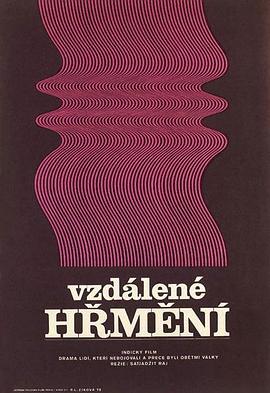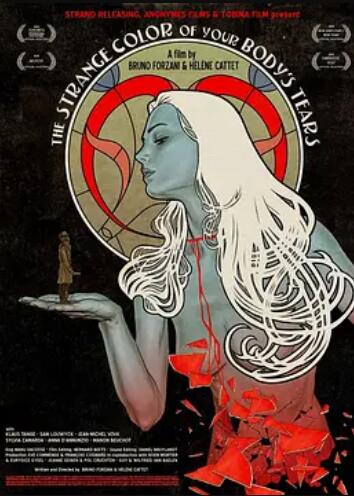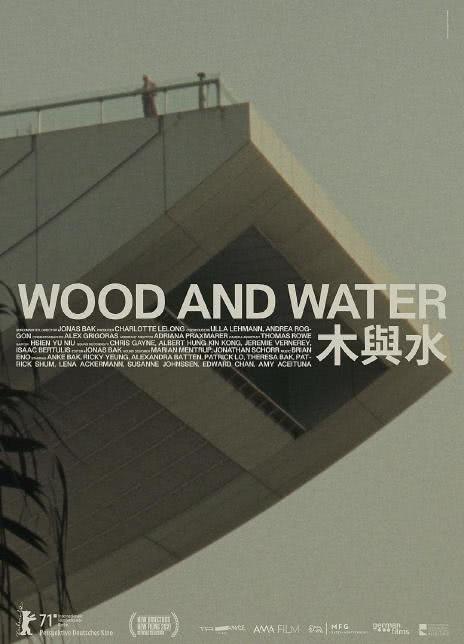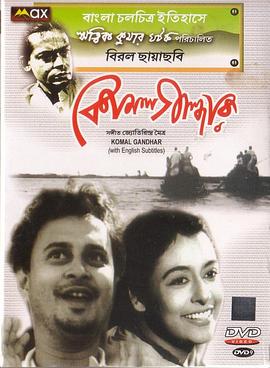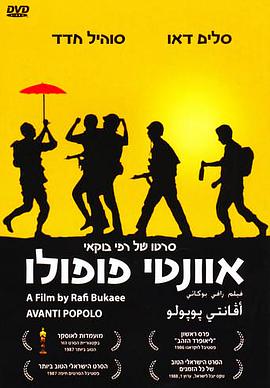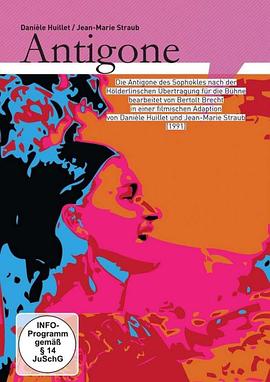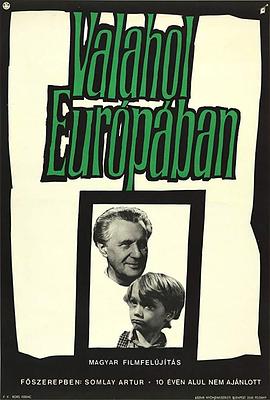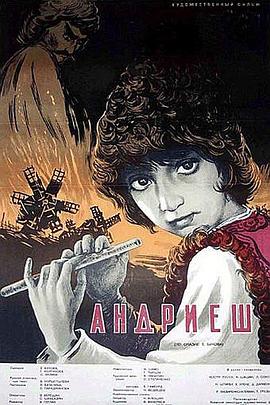Su
最新好看的“Su”的搜索结果推荐
HD中字
遥远的雷声
主演:松米特拉·查特吉,桑迪娅·罗伊,Chitra Banerjee,Paritosh Banerjee,Sachin Chakraborty,Govinda Chakravarti,Shrikumar Dutta,Subal Dutta,Tapan Dutta,Anil Ganguly,Noni Ganguly,Debatosh Ghosh,Gobardhan Ghosh,Dalim Guha
简介: Gangacharan是村里新来的婆罗门(印度僧侣)。在村里,他承担了多种职责。包括教书,组织宗教事务,预防流行病等等。在1943年的印度,时局动荡,战争频仍。乡村上方经常有飞机呼叫盘旋,发出战争的信号。此时,饥荒开始侵袭村民,食物的极度希缺对于已经被战争搅得人心惶惶的村民来说,简直是一次灾难性的生存难关。Gangacharan决定运用他的僧侣身份和特权为村民们争取利益,躲过饥荒。同时,Ganga...
简介: Gangacharan是村里新来的婆罗门(印度僧侣)。在村里,他承担了多种职责。包括教书,组织宗教事务,预防流行病等等。在1943年的印度,时局动荡,战争频仍。乡村上方经常有飞机呼叫盘旋,发出战争的信号。此时,饥荒开始侵袭村民,食物的极度希缺对于已经被战争搅得人心惶惶的村民来说,简直是一次灾难性的生存难关。Gangacharan决定运用他的僧侣身份和特权为村民们争取利益,躲过饥荒。同时,Ganga...
松米特拉·查特吉,桑迪娅·罗伊,C..
11-07
剧情片
更新至第04集
辉夜大小姐想让我告白初吻不会结束
主演:古贺葵,古川慎,小原好美,铃木崚汰,富田美忧,花守由美里,麻仓桃,日高里菜,八代拓,铃代纱弓 Suzushiro Sayumi,子安武人 Takehito Koyasu,青山穰 Yutaka Aoyama,福原遥
简介: #我是动画人# 《辉夜大小姐想让我告白》宣布新动画制作决定。
简介: #我是动画人# 《辉夜大小姐想让我告白》宣布新动画制作决定。
古贺葵,古川慎,小原好美,铃木崚汰..
11-07
动漫
HD中字
你躯体之泪的诡异颜色
主演:克劳斯·坦格,Ursula Bedena,Joe Koener,Birgit Yew,汉斯·德·芒特,Anna D'Annunzio,Jean-Michel Vovk
简介:铅黄电影。有点实验性的Cult片,《安娜迷宫》的导演又给大家带来感官盛宴。怪奇公寓妇女失踪,墙后房间通往童年,礼盒爬出帽子刺客,壁纸起伏欲望隧道;时空循环自我谋杀,白发初恋听诊凶案,糖果夹杂玻璃碎片,爆头画皮血流满屋……
简介:铅黄电影。有点实验性的Cult片,《安娜迷宫》的导演又给大家带来感官盛宴。怪奇公寓妇女失踪,墙后房间通往童年,礼盒爬出帽子刺客,壁纸起伏欲望隧道;时空循环自我谋杀,白发初恋听诊凶案,糖果夹杂玻璃碎片,爆头画皮血流满屋……
克劳斯·坦格,Ursula Bed..
11-07
剧情片
HD中字
木与水
主演:Lena Ackermann,Anke Bak,Theresa Bak,Alexandra Batten,Edward Chan,Susanne Johnssen,Patrick Lo,Patrick Shum,Ricky Yeung
简介:入围第71届柏林电影节德国电影视角单元。 As she enters retirement, a mother leaves behind her solitary life in rural Germany and memories of a once perfect family life and travels to protest-ridden Hong Kong, a place that has kept her son away from her for many years.
简介:入围第71届柏林电影节德国电影视角单元。 As she enters retirement, a mother leaves behind her solitary life in rural Germany and memories of a once perfect family life and travels to protest-ridden Hong Kong, a place that has kept her son away from her for many years.
Lena Ackermann,An..
11-07
剧情片
HD中字
索福克勒斯的安提戈涅
主演:Astrid Ofner,Ursula Ofner,Hans Diehl,Kurt Radeke,Michael Maassen,赖纳·菲利普,Werner Rehm,Lars Studer,Stephan Wolf-Schönburg,Albert Hetterle,Mario di Mattia,迈克尔·柯尼希,利布加特·施瓦茨
简介: 法国导演情侣组合斯特劳布-于伊耶与1991年将索福克勒斯的希腊悲剧《安提戈涅》搬上银幕,文本上采用了德国浪漫主义诗人荷尔德林的著名翻译,版本上则依照布莱希特40年代的改编,拍摄地点是西西里岛上塞杰斯塔的一座古罗马剧院遗址,拍摄时阳光明媚。影片背后文本的多层厚度赋予了本片以极强的现时性:就在拍摄当年的夏天,美军对伊拉克发起了第一轮进攻。这是一部关于教育公民不服从的作品。
简介: 法国导演情侣组合斯特劳布-于伊耶与1991年将索福克勒斯的希腊悲剧《安提戈涅》搬上银幕,文本上采用了德国浪漫主义诗人荷尔德林的著名翻译,版本上则依照布莱希特40年代的改编,拍摄地点是西西里岛上塞杰斯塔的一座古罗马剧院遗址,拍摄时阳光明媚。影片背后文本的多层厚度赋予了本片以极强的现时性:就在拍摄当年的夏天,美军对伊拉克发起了第一轮进攻。这是一部关于教育公民不服从的作品。
Astrid Ofner,Ursu..
11-07
剧情片
HD中字
欧洲的某个地方
主演:Artúr Somlay,Miklós Gábor,Zsuzsa Bánki
简介: Somewhere in the remote region, the war ends. In the midst of ruined cities and houses in the streets, in rural hamlets, everywhere where people still live, are children who have lost their homes and parents. Abandoned, hungry, and in rags, defenseless and humiliated, they wander through the world. Hunger drives them. Little streams of orphans merge into a river which rushes forward and submerges everything in its path. The children do not know any feeling; they know only the world of their enemies. They fight, steal, struggle for a mouthful of food, and violence is merely a means to get it. A gang led by Cahoun finds a refuge in an abandoned castle and encounters an old composer who has voluntarily retired into solitude from a world of hatred, treason, and crime. How can they find a common ground, how can they become mutual friends? The castle becomes their hiding place but possibly it will also be their first home which they may organize and must defend. But even for this, the price will be very high. To this simple story, the journalist, writer, poet, scriptwriter, movie director, and film theoretician Béla Balázs applied many years of experience. He and the director Géza Radványi created a work which opened a new postwar chapter in Hungarian film. Surprisingly, this film has not lost any of its impact over the years, especially on a profound philosophical level. That is to say, it is not merely a movie about war; it is not important in what location and in what period of time it takes place. It is a story outside of time about the joyless fate of children who pay dearly for the cruel war games of adults. At the time it was premiered, the movie was enthusiastically received by the critics. The main roles were taken by streetwise boys of a children's group who created their roles improvisationally in close contact with a few professional actors, and in the children's acting their own fresh experience of war's turmoil appears to be reflected. At the same time, their performance fits admirably into the mosaic of a very complex movie language. Balázs's influence revealed itself, above all, in the introductory sequences: an air raid on an amusement park, seen in a montage of dramatic situations evoking the last spasms of war, where, undoubtedly, we discern the influence of classical Soviet cinematography. Shooting, the boy's escape, the locomotive's wheels, the shadows of soldiers with submachine guns, the sound of a whistle—the images are linked together in abrupt sequences in which varying shots and expressive sharp sounds are emphasized. A perfectly planned screenplay avoided all elements of sentimentality, time-worn stereotypes of wronged children, romanticism and cheap simplification. The authors succeeded in bridging the perilous dramatic abyss of the metamorphosis of a children's community. Their telling of the story (the scene of pillaging, the assault on the castle, etc) independently introduced some neorealist elements which, at that time, were being propagated in Italy by De Sica, Rossellini, and other film artists. The rebukes of contemporary critics, who called attention to "formalism for its own sake" have been forgotten. The masterly art of cameraman Barnabás Hegyi gives vitality to the poetic images. His angle shots of the children, his composition of scenes in the castle interior, are a living document of the times, and underline the atmosphere and the characters of the protagonists. The success of the picture was also enhanced by the musical art of composer Dénes Buday who, in tense situations, inserted the theme of the Marseilaise into the movie's structure, as a motive of community unification, as an expression of friendship and the possibility of understanding. Valahol Europaban is the first significant postwar Hungarian film. It originated in a relaxed atmosphere, replete with joy and euphoria, and it includes these elements in order to demonstrate the strength of humanism, tolerance, and friendship. It represents a general condemnation of war anywhere in the world, in any form.
简介: Somewhere in the remote region, the war ends. In the midst of ruined cities and houses in the streets, in rural hamlets, everywhere where people still live, are children who have lost their homes and parents. Abandoned, hungry, and in rags, defenseless and humiliated, they wander through the world. Hunger drives them. Little streams of orphans merge into a river which rushes forward and submerges everything in its path. The children do not know any feeling; they know only the world of their enemies. They fight, steal, struggle for a mouthful of food, and violence is merely a means to get it. A gang led by Cahoun finds a refuge in an abandoned castle and encounters an old composer who has voluntarily retired into solitude from a world of hatred, treason, and crime. How can they find a common ground, how can they become mutual friends? The castle becomes their hiding place but possibly it will also be their first home which they may organize and must defend. But even for this, the price will be very high. To this simple story, the journalist, writer, poet, scriptwriter, movie director, and film theoretician Béla Balázs applied many years of experience. He and the director Géza Radványi created a work which opened a new postwar chapter in Hungarian film. Surprisingly, this film has not lost any of its impact over the years, especially on a profound philosophical level. That is to say, it is not merely a movie about war; it is not important in what location and in what period of time it takes place. It is a story outside of time about the joyless fate of children who pay dearly for the cruel war games of adults. At the time it was premiered, the movie was enthusiastically received by the critics. The main roles were taken by streetwise boys of a children's group who created their roles improvisationally in close contact with a few professional actors, and in the children's acting their own fresh experience of war's turmoil appears to be reflected. At the same time, their performance fits admirably into the mosaic of a very complex movie language. Balázs's influence revealed itself, above all, in the introductory sequences: an air raid on an amusement park, seen in a montage of dramatic situations evoking the last spasms of war, where, undoubtedly, we discern the influence of classical Soviet cinematography. Shooting, the boy's escape, the locomotive's wheels, the shadows of soldiers with submachine guns, the sound of a whistle—the images are linked together in abrupt sequences in which varying shots and expressive sharp sounds are emphasized. A perfectly planned screenplay avoided all elements of sentimentality, time-worn stereotypes of wronged children, romanticism and cheap simplification. The authors succeeded in bridging the perilous dramatic abyss of the metamorphosis of a children's community. Their telling of the story (the scene of pillaging, the assault on the castle, etc) independently introduced some neorealist elements which, at that time, were being propagated in Italy by De Sica, Rossellini, and other film artists. The rebukes of contemporary critics, who called attention to "formalism for its own sake" have been forgotten. The masterly art of cameraman Barnabás Hegyi gives vitality to the poetic images. His angle shots of the children, his composition of scenes in the castle interior, are a living document of the times, and underline the atmosphere and the characters of the protagonists. The success of the picture was also enhanced by the musical art of composer Dénes Buday who, in tense situations, inserted the theme of the Marseilaise into the movie's structure, as a motive of community unification, as an expression of friendship and the possibility of understanding. Valahol Europaban is the first significant postwar Hungarian film. It originated in a relaxed atmosphere, replete with joy and euphoria, and it includes these elements in order to demonstrate the strength of humanism, tolerance, and friendship. It represents a general condemnation of war anywhere in the world, in any form.
Artúr Somlay,Mikl..
11-07
剧情片


